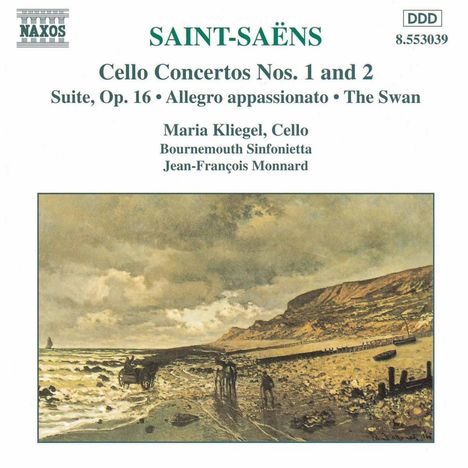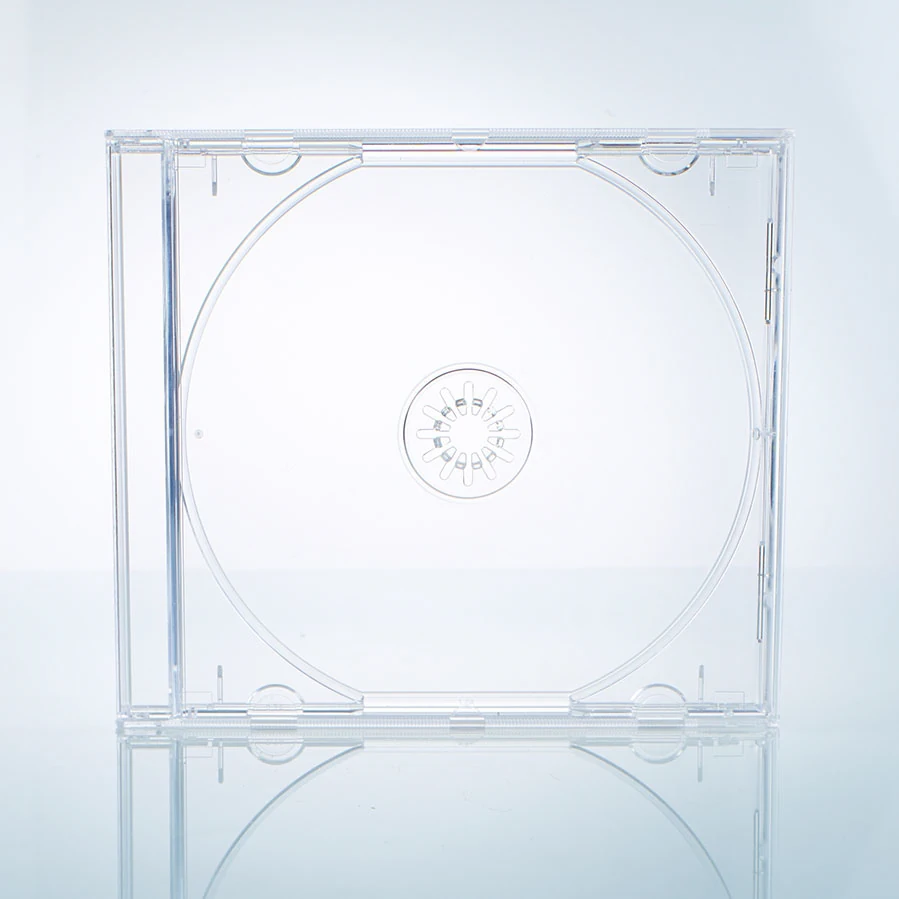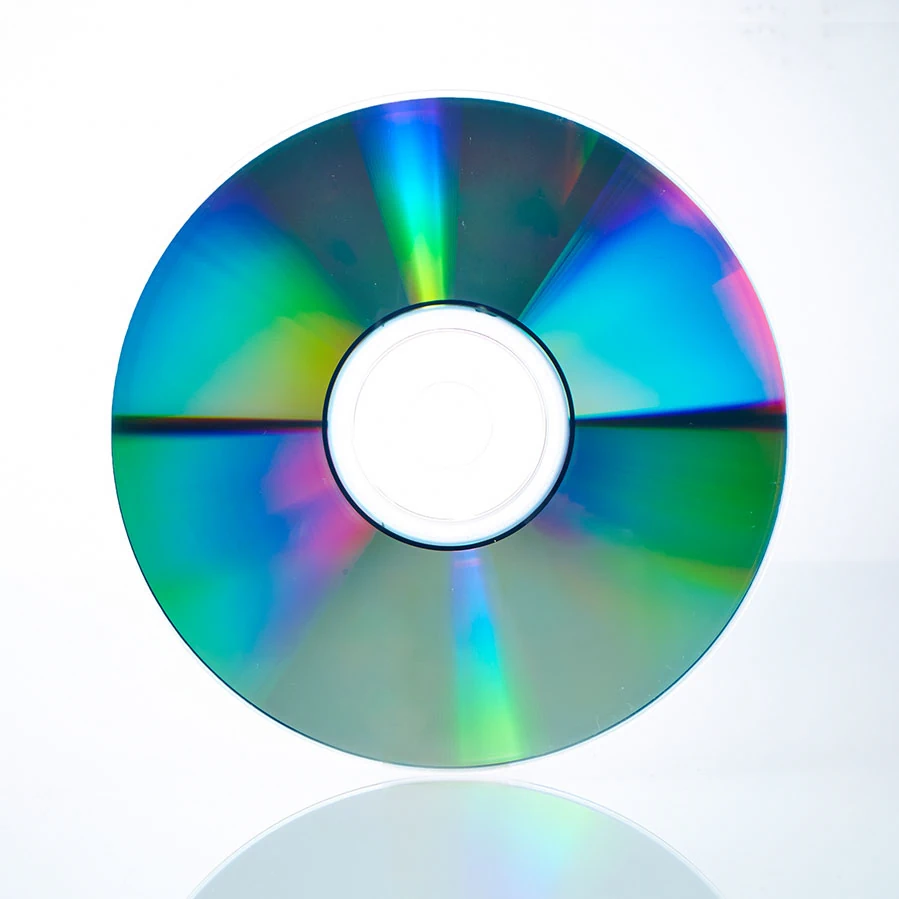Camille Saint-Saens: Cellokonzerte Nr.1 & 2 auf CD
Cellokonzerte Nr.1 & 2
Herkömmliche CD, die mit allen CD-Playern und Computerlaufwerken, aber auch mit den meisten SACD- oder Multiplayern abspielbar ist.
(soweit verfügbar beim Lieferanten)
+Suite op. 16; Allegro appassionato op. 43; Der Schwan aus "Karneval der Tiere"
- Künstler:
- Maria Kliegel, Bournemouth Sinfonietta, Jean-Francois Monnard
- Label:
- Naxos
- Aufnahmejahr ca.:
- 1995
- Artikelnummer:
- 8010863
- UPC/EAN:
- 0730099403924
- Erscheinungstermin:
- 28.2.1997
Saint-Saens war einer der produktivsten französischen Komponisten, der von 1848 bis weit ins 20. Jahrhundert hinein schrieb. Viele würden sagen, er habe zu viel für sein eigenes Wohl geschrieben, und ein Großteil seines Schaffens kann als nichts anderes als musikalisches Konfekt bezeichnet werden.
Aber warum nicht von Zeit zu Zeit ein wenig Konfekt genießen, obwohl seine Musik mit seinen Cellokonzerten einen viel ernsthafteren Charakter annahm. Sie stammt aus dem Jahr 1872, als der Komponist 37 Jahre alt war, und hat einen sehr stürmischen und leidenschaftlichen Kopfsatz, der noch dramatischer ist als das Allegro appassionato, das ebenfalls auf dieser CD enthalten ist und drei Jahre später entstanden ist. Obwohl wir ihn oft für einen eher "sicheren" Komponisten halten, experimentiert das Konzert für seine Zeit eher mit der traditionellen Form, dem Werk in einer Reihe von Abschnitten, als mit Themen und Entwicklungen.
Sehr oft wird das Cello als deklamatorisches Instrument eingesetzt, wobei das Orchester einen schillernden Hintergrund bildet. Es stellt sicherlich enorme Anforderungen an den Solisten, vor allem im schnellen zweiten Satz, und es war schon immer ein Favorit der großen Cellovirtuosen, von denen Maria Kliegel heute eine der wichtigsten Vertreterinnen ist.
Sechzehn Jahre später starb seine Mutter, eine Person, die er weit über das normale Verhältnis zwischen Mutter und Sohn hinaus geliebt hatte. Eine Zeit lang dachte er an Selbstmord und führte fortan ein Nomadenleben, ging auf ausgedehnte Tourneen, und viele seiner folgenden Werke wurden von Musik beeinflusst, die er in fremden Ländern kennen lernte.
Sein zweites Konzert wurde erst 1902 komponiert und ist ein kurzes zweisätziges Werk, das zwar Raum für den romantischen Ton des Cellisten bietet, aber nie an Popularität gewonnen hat.
Ironischerweise wurde sein beliebtestes Werk der Karneval der Tiere, ein Werk, das er in wenigen Tagen vernichtete und dessen Aufführung er zu Lebzeiten verbot, abgesehen von dem einen Satz, einem wunderschönen Solo für Cello mit dem Titel Le Cygne (Der Schwan).
Die CD wird mit einer Aufführung der selten zu hörenden Suite abgeschlossen, die ursprünglich für Klavier und Cello geschrieben wurde und hier in ihrer orchestralen Form zu hören ist.
Product Information
Saint-Saens was one of the most prolific French composers, writing from 1848 well into the 20th Century. Many would say that he wrote too much for his own good, and much of his output can be classed as nothing more than musical confectionary.
But why not enjoy a little confectionary from time to time, though with his cello concertos, his music took on a much more serious character. It dates from 1872, when the composer was 37, and has a very stormy and passionate opening movement, even more dramatic than the Allegro appassionato, which is also included on this disc, and comes from three years later. Though we often think of him as a rather "safe" composer, the concerto, for its period, experiments with traditional form, the work cast in a series of sections, rather than themes and developments.
Very often the cello is used as a declamatory instrument, with the orchestra providing a shimmering backdrop. It certainly makes tremendous demands on the soloist, particularly in the fast second movement, and it has always been a favourite of the great virtuoso cellists, of which Maria Kliegel is one of today's foremost exponents.
Sixteen years later marked the death of his mother, a person who he had loved far beyond that which is normal between mother and son. For a time he thought of suicide, and from then on led a nomadic life, going on long tours, and many of his following works were influenced by music that he encountered in foreign lands.
His second concerto was not composed until 1902, and is a short two movement work, that while offering scope for the cellist's romantic tone, has never captured popularity.
Ironically, his most popular work became the Carnival of the Animals, a work which he dashed off in a few days, and of which he forbade performance during his lifetime, apart from the one movement, a beautiful solo for cello called Le Cygne (The Swan).
The disc is concluded with a performance of the rarely heard Suite, originally written for Piano and Cello, and here heard in its orchestral guise.
Rezensionen
Christine Adam in "Neue Osnabrücker Zeitung" v.29.3.97: "Ein schönes, auch vom Dirigenten und dem Orchester dynamisch gestaltetes Wechselspiel zwischen Soloinstrument und Orchester."V. Hagedorn in FonoForum 7/97: "Camille Saint-Saens' erstes Cellokonzert entsteht hier mit Feuer, Tiefe, Drang, mit großer Kraft und ohne Gewalt. Wenn man die leuchtenden Farben hört und die plastischen Einzelheiten, das Mezzotimbre des Cellos, das sich auch zum dramatischen Sopran aufschwingen kann, weiß man, was sonst fehlt."
Disk 1 von 1 (CD)
-
1 Cello Concerto No. 1 in A minor, Op. 33: I. Allegro non troppo
-
2 Cello Concerto No. 1 in A minor, Op. 33: II. Allegretto con moto
-
3 Cello Concerto No. 1 In A Minor, Op. 33: Iii. Allegro Non Troppo
-
4 Suite in D minor, Op. 16 (arr. for cello and orchestra): I. Prelude: Moderato assai
-
5 Suite in D minor, Op. 16 (arr. for cello and orchestra): II. Serenade: Andantino
-
6 Suite In D Minor, Op. 16 (Arr. For Cello And Orchestra): Iii. Gavotte: Allegro Non Troppo
-
7 Suite in D minor, Op. 16 (arr. for cello and orchestra): IV. Romance: Molto adagio
-
8 Suite in D minor, Op. 16 (arr. for cello and orchestra): V. Tarantelle: Presto non troppo
-
9 Cello Concerto No. 2 in D minor, Op. 119: I. Allegro moderato e maestoso
-
10 Cello Concerto No. 2 in D minor, Op. 119: II. Allegro non troppo
-
11 Allegro appassionato in B minor, Op. 43
-
12 Carnival Of The Animals: Xiii. Le Cygne (The Swan) (Arr. For Cello And Orchestra)
Mehr von Camille Saint-S...








